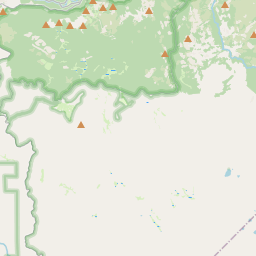Yosemite Valley Railroad
Historical marker location:
El Portal, California
( Marker is on Foresta Road near El Portal Road.)







© OpenStreetMap contributors
Loading...
Searching for other points of interest within 3 miles of this location.California was the site of the nation's first successful oil well in 1892. The well was drilled in the city of Los Angeles and produced about 25 barrels of oil a day. Today, California remains a major oil-producing state.
About Mariposa County
Mariposa County Timeline
Mariposa County, located in the central part of California, has a rich and colorful history that dates back thousands of years. The area was originally inhabited by Native American tribes, including the Miwok, before European settlers arrived. In the early 1840s, the famous California Gold Rush drew thousands of miners to the region, leading to the establishment of Mariposa County in 1850 as one of California's original 27 counties.
The county's name, Mariposa, is a Spanish word meaning butterfly, and it was named after Mariposa Creek, which runs through the area. The county's first county seat was Agua Fria, but it was later moved to Mariposa in 1854. During the Gold Rush era, Mariposa County experienced significant growth and attracted many prospectors seeking their fortunes. The discovery of gold in the area led to the establishment of mining towns, including Hornitos and Coulterville, which played a crucial role in the county's development.
Mariposa County also has a historical significance as home to Yosemite Valley, which became one of the first national parks in the United States. In 1864, President Abraham Lincoln signed the Yosemite Grant, protecting the valley and the Mariposa Grove of Giant Sequoias, located within the county's boundaries. This act of preservation marked a significant milestone in the conservation movement and laid the foundation for the creation of the national park system.
Over the years, Mariposa County has continued to thrive as a tourist destination, attracting visitors from around the world to admire the natural beauty of Yosemite National Park. The county's economy is now primarily based on tourism, agriculture, and government services. Mariposa County has preserved its historical charm, with many historical sites and buildings still standing, serving as a reminder of its vibrant past.
The county's name, Mariposa, is a Spanish word meaning butterfly, and it was named after Mariposa Creek, which runs through the area. The county's first county seat was Agua Fria, but it was later moved to Mariposa in 1854. During the Gold Rush era, Mariposa County experienced significant growth and attracted many prospectors seeking their fortunes. The discovery of gold in the area led to the establishment of mining towns, including Hornitos and Coulterville, which played a crucial role in the county's development.
Mariposa County also has a historical significance as home to Yosemite Valley, which became one of the first national parks in the United States. In 1864, President Abraham Lincoln signed the Yosemite Grant, protecting the valley and the Mariposa Grove of Giant Sequoias, located within the county's boundaries. This act of preservation marked a significant milestone in the conservation movement and laid the foundation for the creation of the national park system.
Over the years, Mariposa County has continued to thrive as a tourist destination, attracting visitors from around the world to admire the natural beauty of Yosemite National Park. The county's economy is now primarily based on tourism, agriculture, and government services. Mariposa County has preserved its historical charm, with many historical sites and buildings still standing, serving as a reminder of its vibrant past.
Mariposa County Timeline
This timeline provides a concise overview of the key events in the history of Mariposa County, California.
- 1849 - Mariposa County is established as one of the original 27 counties of California.
- 1850 - Mariposa becomes the largest county in California, covering a vast area of the Sierra Nevada range.
- 1851 - The California State Legislature authorizes the construction of a courthouse in Mariposa.
- 1852 - The Mariposa Gazette, the county's first newspaper, is established.
- 1855 - The California State Legislature reduces Mariposa County's territory, creating several new counties.
- 1861 - Mariposa County is greatly affected by the outbreak of the Civil War, as many residents join the Union Army.
- 1866 - The Yosemite Grant is signed by President Abraham Lincoln, establishing the world's first national park and including parts of Mariposa County.
- 1892 - The Yosemite Valley Railroad begins operation, boosting tourism in Mariposa County.
- 1915 - The Wawona Hotel, a historic landmark in Mariposa County, is rebuilt and opens to the public.
- 1940 - The Mariposa Museum and History Center is established to preserve and showcase the county's rich heritage.
- 1969 - The Sierra National Forest is established, encompassing a significant portion of Mariposa County.
- 1987 - The majestic Mariposa Grove, home to 500 giant sequoia trees, is added to Yosemite National Park.